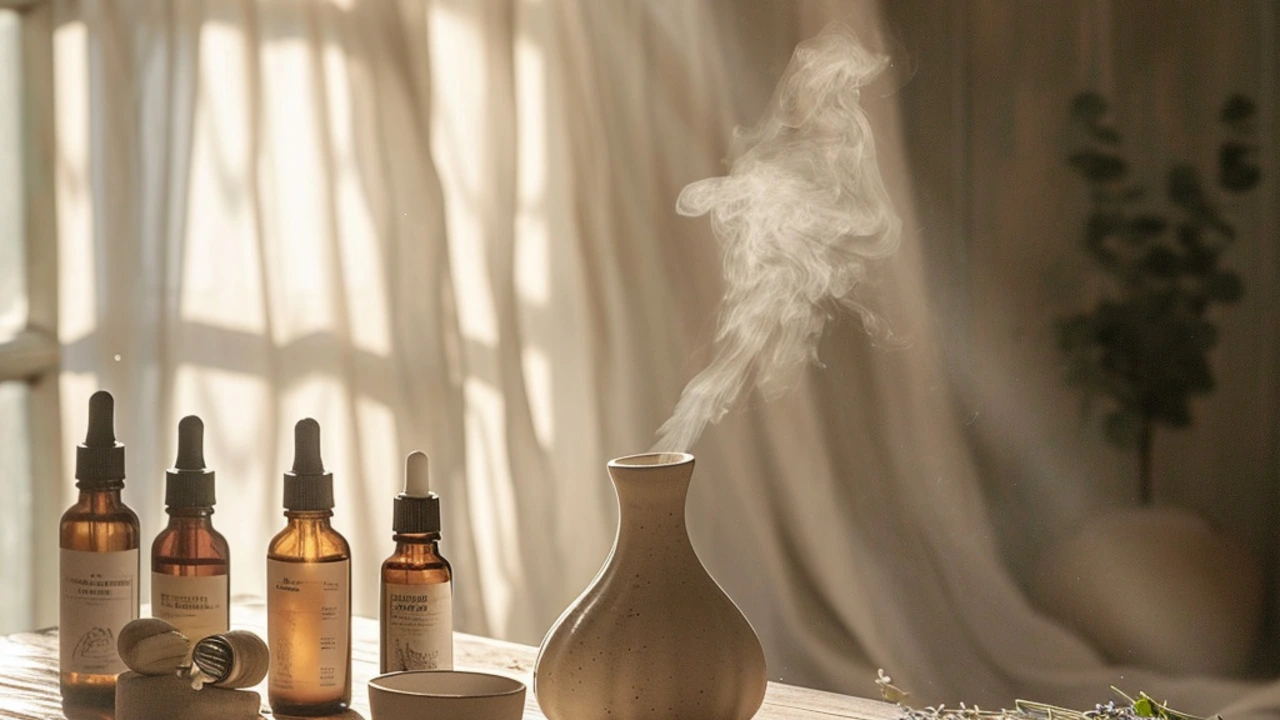Essential Oil Benefits: Practical Uses and Safety Tips
Smell can change how you feel fast. Essential oil benefits go beyond fragrance — they can ease stress, help sleep, and support breathing when used right. This guide gives practical uses, quick recipes, and safety tips so you can try oils without guessing.
A few oils do most of the work. Lavender is calming and commonly used for sleep and anxiety. Peppermint eases headaches and clears sinuses. Eucalyptus supports easier breathing and can be helpful during colds. Tea tree fights microbes on skin when diluted. Lemon lifts mood and brightens a room.
How to use them safely matters. Never apply undiluted oils directly to skin. Mix 1 drop of essential oil with a teaspoon of carrier oil for facial use, or use 2 to 3 drops per 10 ml of carrier for larger areas. For inhalation, put 3 to 4 drops in a diffuser for 20 to 30 minutes, or inhale from a tissue for quick relief. Avoid ingestion unless advised by a qualified health professional.
Quick recipes you can try
Sleep blend: 3 drops lavender + 2 drops cedarwood in a diffuser before bed. Headache roll-on: 2 drops peppermint + 8 ml jojoba oil in a roll-on bottle. Apply to temples and neck, avoid eyes. Breathing support: 2 drops eucalyptus + 2 drops lemon in hot water. Lean over a bowl with a towel for steam inhalation for a few minutes.
Simple safety checklist
Patch test before full use. Start with low dilution and watch for reactions for 24 hours. Keep oils away from eyes and mucous membranes. If you have chronic illness or take medication, ask a pharmacist or doctor.
Quality affects results. Look for oils labeled 100% pure essential oil and check for a Latin name and country of origin when possible. Cheap blends may use synthetic fragrances that don’t have therapeutic benefits. Store oils in dark glass bottles away from heat and light to keep them fresh.
Want quick ways to try aromatherapy? Add a drop to your pillowcase, put a few drops on a cotton ball in your bag while traveling, or mix oils into unscented lotion for a gentle effect. For respiratory support, pair aromatherapy with steam, saline sprays, or rest—oils help, but they don’t replace medical care.
Try our articles on aromatherapy basics, travel blends, and respiratory support to see step-by-step tips and practical routines. Join a local workshop or ask a certified aromatherapist for personalized guidance. Start small, track effects, and adjust safely over time regularly.

Essential Guide to Aromatherapy Benefits and Practices
Hey there, lovely readers! Have you ever been curious about aromatherapy and its wonders? I'm thrilled to dive deep into the heart of aromatherapy with you all. It's not just about pleasant scents; it's a holistic healing journey that can enhance your mind, body, and spirit. I'll be sharing insightful tips on how to incorporate essential oils into your daily routine, uncover their therapeutic properties, and explore the best practices for maximum benefits. So, let's embark on this aromatic adventure together and discover how these little bottles of magic can make a big difference in our lives!
Read More